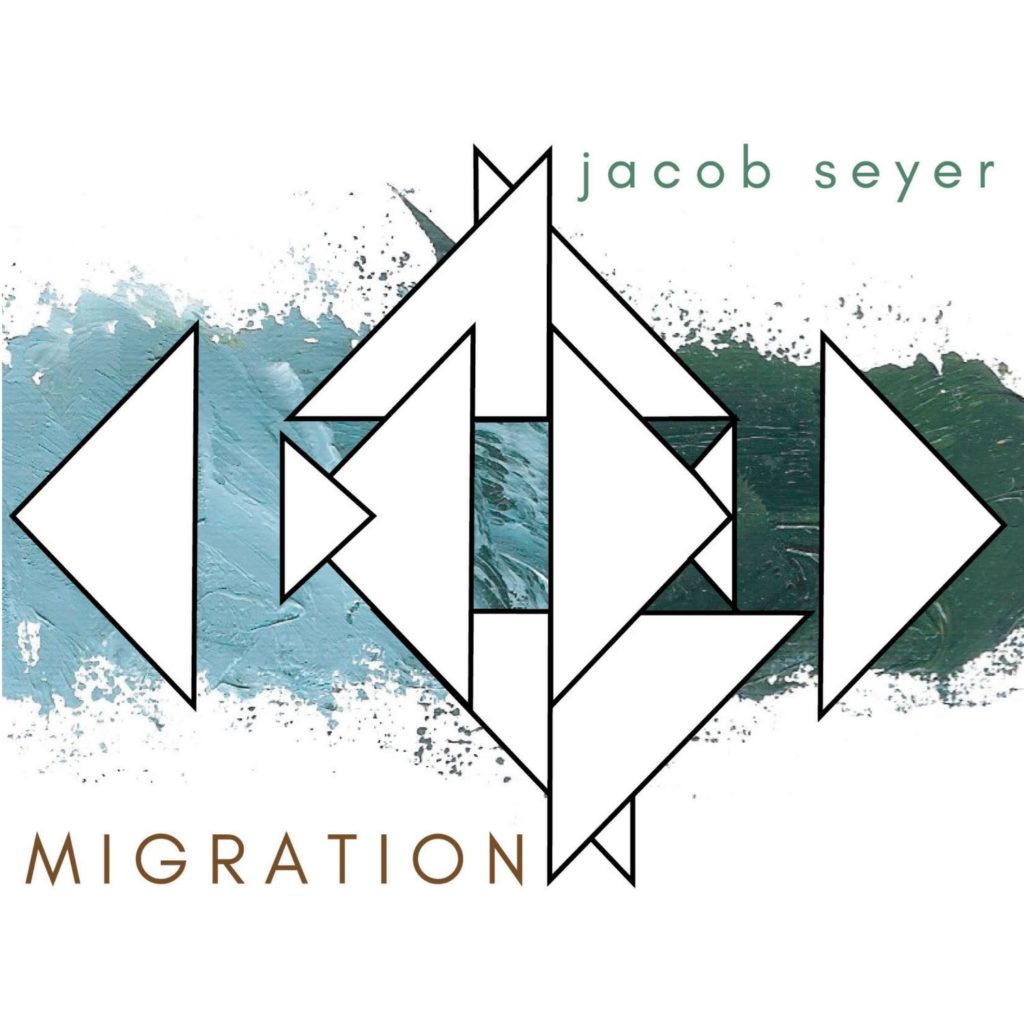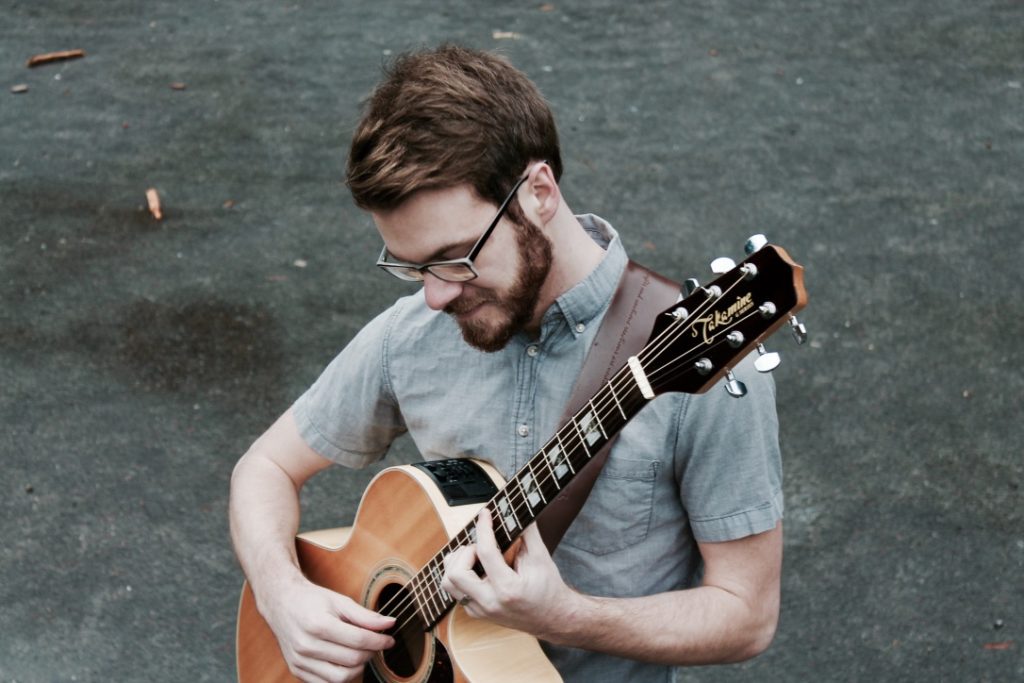
Years ago, I bathed in fingerstyle guitar music.
From 1998 to about 2010, (when I was in my early 20s) fingerstyle guitar was my main thing. Then, I drifted into jazz and explored that realm.
When I started getting into fingerstyle guitar, it was difficult to find any videos showing me how to play like that. I learned by ear & by guessing. Occasionally, I would find transcriptions of players like Michael Hedges in magazines like Guitar Player and Acoustic Guitar Magazine but they were rare.
Then, the YouTube boom happened! And many more guitarists discovered fingerstyle guitar via players like Andy McKee, Sungha Jung, Jon Gomm, Thomas Leeb and many others.
Listening to Jacob Seyer’s album Migration (now out for more than a year now), reminds me of the kind of excitement I used to have when I first ventured into finger style guitar. It’s a full on 18-track release that brings together his many compositions over five years into one major artistic statement.
The thing that drew me in was the carefully played textures and layers, often polyrhythmic ala Thomas Leeb. The melodies (that Jacob played) were really a thing as opposed to an afterthought of typical “Let’s pick a weird tuning and do fancy two-handed stuff.”
Jacob is writing real music, coming from a long tradition of finger style guitar storytellers. In addition to the beautiful music, the album art is particularly attractive geometric shapes (by Jacob) against oil-paintings by his sister Jordan Seyer, brought together with rendering/digitization by Roger Seyer.
According to Jacob himself:
“Migration” is a concept album of 18 carefully designed tracks written over a five year period of time which uses innovative techniques in composition and guitar performance to tie together a story of tragedy, adaptation, and rediscovery of self. Throughout the album, recurring musical themes appear in various forms, redirecting character trajectories and spawning new material. Divided into three distinct sections, Migration displays a dynamic interpretation of a wide spectrum of human experience including; anxiety, confusion, loss of self, discovery, untamed inspiration, excited animation, and contented, contemplative reflection.”
The opening track, Textures sets the mood nicely as the album begins and going straight into Bloom. As soon as the record started, I knew this was an album. (What I mean here is that some ‘albums’ tend to be collections of songs, rather than a coherent work on its own like concept albums used to be in the 1970s and 1980s).
The dynamics and harmony paint a beautiful sonic landscape before breaking off into another section. The piece is both rhythmically and melodically driven, bringing in glimpses of Andrew York inspired phrases before some percussive slaps come in. Nothing remains long enough to be predictable yet it’s still thematically built.
Bloom continues the contrapuntal journey with a two-part conversation that develops into a some more exotic melodic phrases. The piece develops until some strumming comes in later (for awhile) before ending with some tasteful pizzicato bass phrases.
Integrate is a beautiful flowing piece that goes into introspective harmony territory. Again, I can hear the layered rhythmically independent pedal against the strong melodic statement. Harmonics come in again soon after before the flowing phrases reappear. The melodies are beautiful on this one with some especially tasty layered ideas at the end of the piece.
Meditation No. 1 – Days After (named by Jacob in reference to becoming engaged to his wife, Deavyn West Seyer) gives our ears some rest with sustained chords before the patient arpeggios breathe into the piece. Jacob really knows how to decorate the spacious melodies with pretty embellishments.
Next up is Bound, which goes back into strong driving rhythms that push for most of the piece before a small relief appears just before the final section. This piece was inspired by his move to the Pacific Northwest.
Guide brings the percussive vibe before layered parts take over with nice rhythmic percussion and slap harmonics coming in later. The 2nd half of the piece brings some tense rhythmic drama before the arpeggios take over again. There’s a lot happening here and it does sound densely through-composed. I remember more of the feeling than the actual melodies in this piece.
Meditation No. 2 – Nocturne takes the atmosphere down in tempo but still ever pulsating ahead with the time. Some jazzy chords punctuate ends of some phrases which add a moody mysterious vibe to the piece. Some percussion appears again for a momentary contrast before tasty vibrato appears on some of the melody notes. Up to this part of the album, this feels like the longest piece (although when I check the time, Integrate is longer by 5 seconds).
Interlude brings in some more modern tapped lower chord textures, slapped harmonics and percussion as a break from the first third of the album.
Logistic Thoughts brings back the tense energy and drama of the first part of the album with different emotions contrasting very briskly. Cautious Reactions bring back memories of me listening to early Thomas Leeb circa the Riddle album era.
We Speak is the most low key composition in the album thus far. It gives some breathing space from the intensity of everything so far. This piece did feel a bit stretched for me until the harmonics section appeared to break it up. Later on, when I read about the story behind the song (inspired by a dream of presence in silent communication with a passed family member), the piece made more sense.
Of the Mind’s Eye sets the drive back on with diverse textures again before the album goes into Meditation No. 3 – Intimation. another flowing arpeggiated piece.
Danze is up next with driving pulse before Home comes in. One of the most emotional pieces on the album, this track is beautiful. Reunion continues the emotional journey started in Home. This track reminds me of some of Pierre Bensusan’s melodic & harmonic sensibilities. Interestingly, even though I didn’t read about who the tracks Home & Reunion were for, I could feel the emotional connection between the pieces which were for Jacob’s mother, Joni Seyer and his father Chris Seyer, respectively.
Relictus (en Aethere) is a tremolo piece that introduces a different atmosphere to this album. At this point, I can feel that the album begins with really high energy and goes into a more meditative vibe towards the end. The muted high register tremolo section is a particularly attractive and haunting moment in this piece. According to Jacob, “Relictus en Aethere” roughly translated from Latin, “to leave into the ether.”
Closing the album is Waves, a driving strumming showpiece that rocks its way to the end till the stop time hits that we hear at the end.
.Throughout the recording, Jacob’s tone and expressiveness really comes through on his beautiful dynamically responsive G.R Bear guitar. A challenging album to listen to with many contrapuntally played melodies & parts, Jacob’s album is one for fingerstyle guitar fans who (like me) are coming from an older tradition with folks Michael Hedges & Alex de Grassi who emphasise compositional development.
TLDR: For fans of beautiful textural compositions & acoustic fingerstyle guitar, do check out this album.
Get your copy here: https://www.jacobseyer.com/shop
I received a review copy of this album from Jacob. Thanks Jacob!
[About Jacob]

International artist, acoustic guitarist, and composer, Jacob Seyer offers an exciting and fluid aesthetic as well as an extensive grasp of guitar technique in his music. Having toured with concerts in Canada, USA, and South America, Jacob’s newest full length album, “Migration” is quickly gaining traction as a groundbreaking collection of new music for the guitar.
His music has been made available to worldwide audiences both on public streaming sites and to producers of film and TV through a recent publishing contract with Naz Music, Inc.
Jacob’s performances of instrumental guitar music are progressive, energetic, and introspective, blending elements of modern percussive guitar, contemporary classical and jazz, and various folk musics. Since graduating in 2017 with a Masters Degree in Guitar Performance at the University of British Columbia, Jacob has filled his schedule with teaching, volunteering for local and international music non-profits, performing in festivals, and producing music with support from around the world.
Five years after his first EP release (“A Change in Season,” 2013), Jacob’s debut full length album, “Migration,” (2018) tells a story of overcoming tragedy, movement, and re-integration.
The production costs were generously covered by international supporters of Jacob’s music on the crowdfunding platform, Kickstarter.
With nearly a decade of experience in instructing diverse styles of guitar technique, Jacob was awarded “Teacher of the Year” at the Vancouver Central School of Music for the 2017-18 school year. Jacob began his teaching career in 2011 at his home-town in Missouri at the
Southeast Music Academy. Since then, he has gained traction in Washington state and in Vancouver as an enthusiastic instructor and guitar clinician with a strong specialization in classical and finger style technique, open to students of all ages, styles and ability levels.
He currently teaches at the Vancouver Central School of Music, Campos Music, and has a growing private studio in Vancouver, BC.
Currently, Jacob is transcribing new music both of his own and others for the solo guitar, guitar duo, and guitar with various instrumentation. While Seyer’s music is largely progressive and dynamic, his transcriptions are meticulously detailed with attention to layout and typesetting, phrasing, fingerings, and clear descriptions of extended techniques.
Jacob is an independent producer of his own musical scores and has recently begun collaboration with Estonian music publisher, Terentyev Publishing Company (Tigran Hamasyan, Espen Jorgensen, etc.) on a project to be announced.
Through his work as a performer, composer, and instructor, Jacob Seyer seeks to engage and serve the local and international music community by lending his unique voice to the exciting and rapidly-growing guitar scene.
Leave a Reply